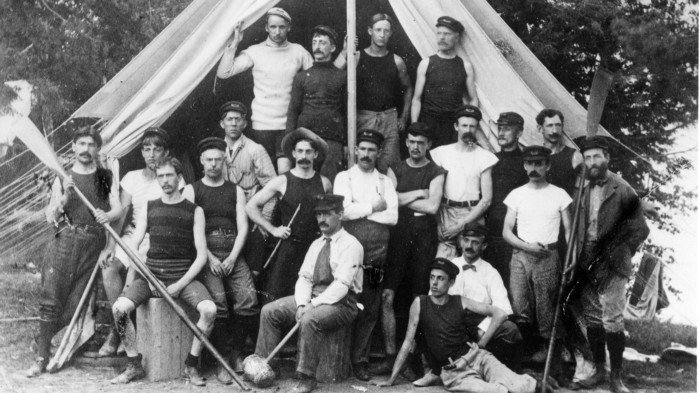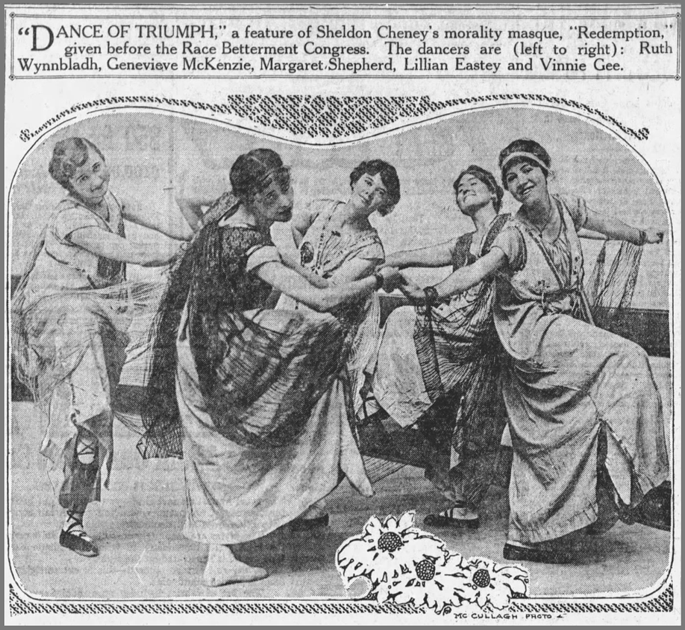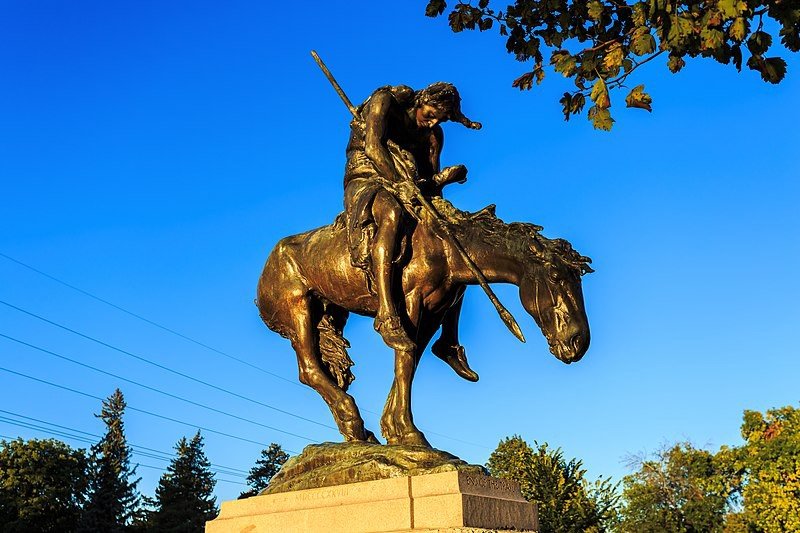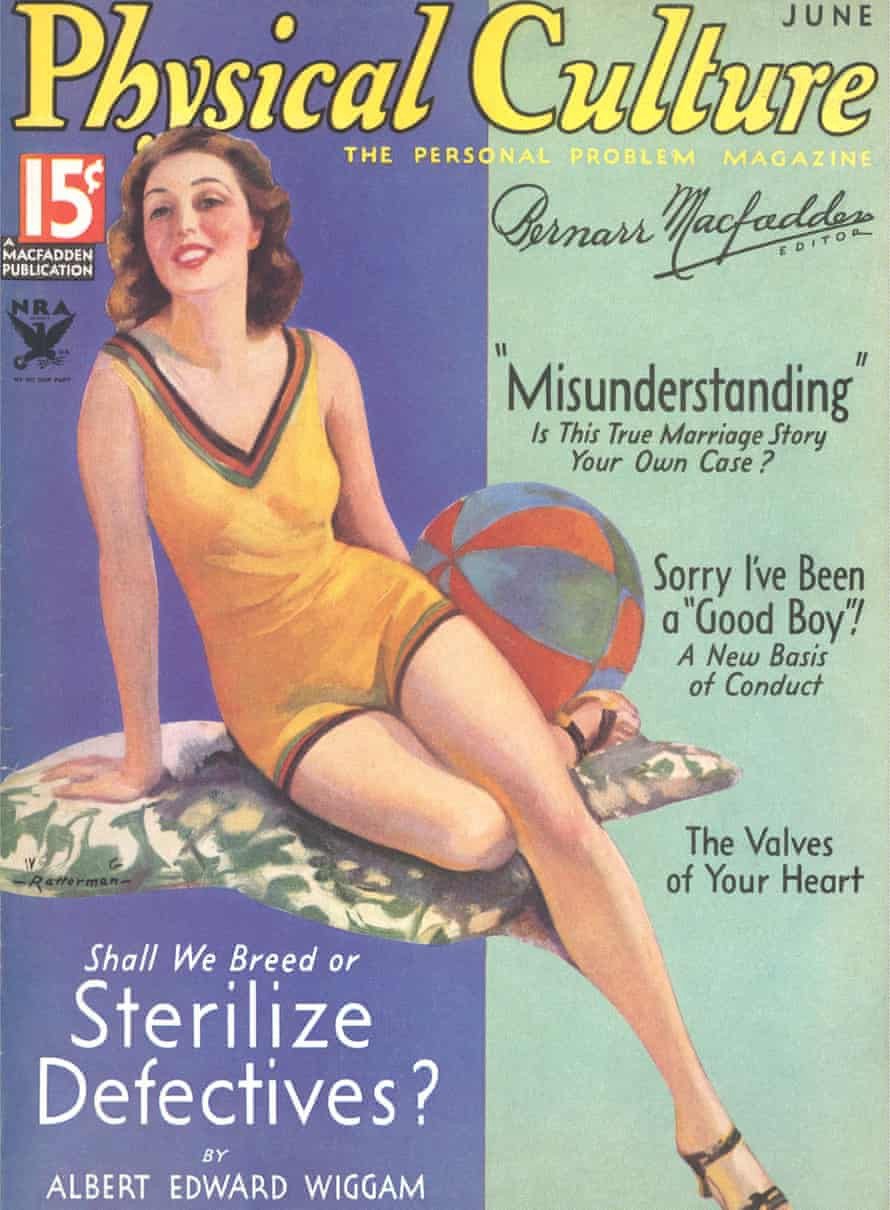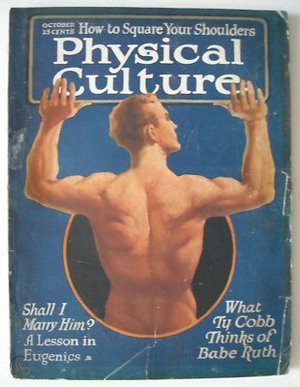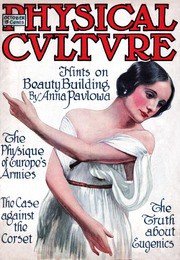Eugenics and the American Religion of Wellness
Morning callisthenics at the Battle Creek Sanitarium
‘Do you really want to be perfectly well?’ So begins a tantalizing advert in Good Health magazine in 1905. It invited the reader to the Battle Creek Sanitarium in Michigan, where countless specialists are ‘studying this one thing alone — how to get well and how to stay well.’ For $85 a week ($1,200 in today’s money), you could stay in one of the San’s 400 rooms, each with private bathrooms and hot running water. You could use the San’s gymnasium, and play volleyball or badminton; you could visit its massage rooms, and pick a masseur or a vibrating chair; you could go for a course of hydrotherapy, in one of the Russian, Turkish or Greek baths; then descend to the basement for an enema of water, or yogurt if you wanted to improve your colonic probiotics.
Fully cleansed, you could take your seat in the 800-person dining room, and eat dinner to the sound of the San orchestra. You would be served your own personalized diet, mainly consisting of vegetables, with healthy portions of two of the San’s inventions: corn flakes and peanut butter. After dinner, you could practice aerobics on the roof to a brass band, then attend an evening lecture, possibly by the director of the Sanitarium, Dr John Henry Kellogg, resplendent in his all-white suit.
Dr Kellogg’s parents had come to Battle Creek in the mid-19th century as part of a new religious movement called the Seventh Day Adventists. They were a Christian sect that emerged out of the Second Great Awakening, the same ecstatic revival that produced the Oneida Cult. The Adventists were led by a prophetess called Ellen White, who claimed to receive direct messages from God. The Lord ordered the Adventists to stop eating meat, smoking tobacco, or drinking alcohol, and instead to adopt new health techniques like hydrotherapy, calisthenics, and massage. These would help prepare the Adventists’ bodies and souls for the Second Coming of Christ and the new Millennium, which was due any day now. These health commandments have turned the Adventists into the healthiest demographic in the U.S., with a life expectancy five to seven years above the American average.
If we had to pinpoint when the modern ‘religion of wellness’ really took off, and spas and gyms became the modern temples, we could point to this moment in the mid-19th-century, when Protestant movements like Adventism and Christian Science re-invented Christianity as the gospel of healthy living. At the same time, in the UK the Young Christian Men’s Movement (YMCA) launched the first chain of gyms, where young Christian men could go to exorcise their demons. Previous Christian movements had typically denigrated the body and elevated the soul. In 19th-century Protestant movements, by contrast, a healthy soul required a healthy body, and God evolved into a fitness coach.
Young man, there’s a place you can go — a photo of an early YMCA group
In 1866, the Lord told Ellen White to set up a spa at Battle Creek in Michigan, and so the Adventists opened the Western Health Reform Institute. A decade later, the running of the spa was handed to a 26-year-old Adventist with a degree in medicine called Dr John Henry Kellogg. Dr Kellogg immediately stamped his personality onto the place, renaming it the Battle Creek Sanitarium, and running it with the help of his younger brother, Will.
The brothers turned the Sanitarium into a roaring success, with tens of thousands of guests passing through its doors each year. As it grew, Dr Kellogg steered it away from its roots in Adventism, and used it as the platform for his own emerging world-view. He laid out his vision in the 1903 tract, The Living Temple. Science and religion were not opposed, he declared. The Lord Himself advocated ‘biologic living’ in accordance with His moral and physical laws. The human race was in danger of degeneration through the evil influence of meat-eating, alcohol, tobacco, and above all, masturbation. Dr Kellogg believed masturbation caused ‘neurasthenia’, or nervous collapse, and advocated stern remedies to cure young people of the vice. If all else failed, he recommended circumcising young men, and performing cliterodectomies on young women. Meanwhile, he also advocated and personally performed 30-minute ‘uterine massages’ on female clients at the San, as a cure for nervous disorders.
Dr John Harvey Kellogg, and the Corn Flakes launched and popularized by his brother Will
What startled his fellow Adventists was not the pelvic massages but Dr Kellogg’s pantheism. The Living Temple barely mentioned Christ, while suggesting that all species contain the living spark of the divine. Dr Kellogg also suggested, as the Oneidans did, that through ‘biologic living’ the body may be able to live forever. Ellen White condemned Dr Kellogg as having fallen under the influence of Satan, and in 1907 he was excommunicated from the Adventist church. By that point, he and the Sanitarium had outgrown Adventism. He had become an international celebrity, dispensing health tips to the nation, diagnosing presidents, exchanging letters with Count Tolstoy and Ivan Pavlov, and hosting everyone from Henry Ford to Tarzan actor Johnny Weissmuller at the San.
And Kellogg had a new mission: save the human race from extinction through eugenics. He invited leading American eugenicists to his spa, such as Charles Davenport, head of the Eugenics Record Office at Cold Spring Harbour Laboratory, who visited the San and preached on ‘Eugenics as a Religion’.
Dr Kellogg developed his own form of spiritual eugenics. On the one hand, he preached ‘eusthenics’, which is the Lamarckian idea that you can improve your fitness through healthy living and then pass the improvements on to your descendants. However, not everyone could be saved. For some hopeless cases, sterilization was required. Despite being an anti-segregationist, Dr Kellogg insisted the ‘negro race’ was heading for extinction and warned against racial inter-breeding. He promoted his ideas on eugenics and the religion of healthy living in the pages of Good Health magazine, and in the Race Betterment Conference, which he organized and held at Battle Creek in 1914. It was such a success, he organized another conference the following year, at the Panama Pacific Exposition in San Francisco. The Exposition dedicated a week to race betterment, with statues and murals on themes like ‘The Mother of Tomorrow’, ‘Survival of the Fittest’ and a statue called ‘The End of the Trail’, showing a listless Native American trudging towards race extinction. Dr Kellogg declared in his conference speech: ‘The world needs a new aristocracy…made up of Apollos and Venuses and their fortunate progeny.’
His tireless efforts to promote eugenics culminated in the 1917 Michigan law for sterilization, which he helped to pass when he was on the Michigan board of health. For the next 30 years, until his death in 1943, he dedicated himself to the religious mission of eugenics. It was, he said, the only way ‘to save the human race, or at least the white portion of it.’
The Race Betterment Week at the Panama Exposition included a masque on the theme of race redemption, and a statue depicting the sad but inevitable end of the Native American race.
Breeding American supermen and superwomen
The history of eugenics in the United States is by now a well-told story. It is well-known that the U.S. took up the flag raised by British eugenicists and carried it forward. While the UK never passed a law to sterilize those deemed unfit, 32 U.S. states did (and 31 states still allow involuntary sterilization of those deemed unfit to be parents). Roughly 70,000 people were involuntarily sterilized between 1899 and 1970.
However, historians of American eugenics have tended to focus on eugenics as a science (or pseudo-science), and on involuntary sterilizations, particularly of ethnic minorities. What hasn’t been so explored is the history of positive eugenics in the U.S. — i.e the attempt to breed supermen and superwomen — or eugenics as an American religion or spirituality. This is the story I want to explore in this chapter. We’ve already looked at Dr Kellogg and his temple of health. Now, we venture across the road to visit Bernarr MacFadden’s Healthatorium.
Bernarr MacFadden was possibly even more famous than Dr Kellogg. In his lifetime, he was the leading proponent of ‘physical culture’, or bodybuilding, as well as the owner of a profitable magazine empire. He was born Bernard McFadden in 1868 (he later changed his name to make it sound more macho). He grew up an orphan and almost died himself after an inoculation against smallpox went wrong and gave him blood poisoning. But he built himself up through weight-lifting, and turned himself into a champion wrestler. Then he noticed the fame and fortune being won by Eugene Sandow, the most famous body-builder of the early 20th century. MacFadden took a leaf out of Sandow’s showmanship, and declared himself as an expert in ‘physical culture’.
When Sandow launched a magazine called Physical Culture in Europe in 1898, MacFadden launched his own magazine in the US, also called Physical Culture. It did well, partly because it contained saucier photos than other health magazines. Prudery, MacFadden declared, was the enemy of the healthy body. He also launched the Bernarr MacFadden exercise programme, a chain of health food restaurants, a ‘Healthatarium’ in Battle Creek, and a hugely popular national competition for the ‘perfect body’ which culminated in a sold-out final at Madison Square Gardens.
MacFadden understood that American health has, since the days of travelling medicine shows, always been as much about theatre as science. There was a certain amount of snake oil mixed in with the theatrics. The pages of Physical Culture magazine were filled with adverts for every conceivable treatment, including a device called the Wimpum to counteract sexual impotency.
MacFadden declared war on mainstream medicine, insisting that any illness could be cured by fasting and exercise. The 1918 Spanish Flu pandemic was caused, he said, by poor diet. Vaccination was a scam. The American Medical Association was an evil cabal trying to control our lives (the AMA in return tried to cancel MacFadden’s public lectures). As in wellness culture today, there was a strong streak of body perfectionism, ableism, and social Darwinism in the pages of Physical Culture. Its slogan was: ‘Weakness is a crime. Don’t be a sinner!’ It’s not surprising, then, that Physical Culture should have actively promoted eugenics. The magazine often carried cover stories like one penned by Alfred Wiggam called ‘Should we sterilize defectives?’ (yes, Wiggam concluded). MacFadden’s brand of eugenics, like Dr Kellogg’s, had a strong Lamarckian streak. You could prevent the deterioration of the race by signing up for a programme of healthy living. You could turn yourself from a C3 weakling into an A1 superman. The winner of one of MacFadden’s contests, Charles Atlas, was one of many physical culture gurus to offer a programme for turning yourself into a ‘he-man…with just 15 minutes exercise a day.’
Once you’d turned yourself into a superman, you should find a superwoman and make superbabies. MacFadden found his second wife by holding a contest for the perfect female body in Britain, and then marrying the winner, Mary Williamson. She later wrote: ‘The children I was to have would be looked upon by Bernarr as the beginning of a new race of human beings uncontaminated by the things that had put civilization where he thought it was’. They had eight children: Helen, Byrne, Byrnece, Beulah, Beverly, Brewster, Berwyn, and Braunda. MacFadden was so impressed with Byrnece he sent a statue of her naked body on a tour of the U.S., as a prototype of the superbeing of the future. One of his papers, the New York Graphic, ran a competition to find ‘Twenty American Apollos and Dianas’. Entrants would send in photos of themselves in swimwear, and then be matched by MacFadden with appropriate mates. If they married, they’d receive $1,000, and another $100 for every baby produced.
This attempt to create a new race of Apollos and Dianas could veer into quasi-fascist territory. In 1927, Physical Culture magazine printed a glowing interview with Benito Mussolini. ‘Fascism’, he told the magazine, ‘is a muscular creed.’ MacFadden met Il Duce and gave him dietary advice, and also personally trained 40 Italian fascist cadets in his ‘psycultopathy’ techniques. He told one interviewer: ‘There are times when I believe that America needs a Mussolini, as never before.’ Thankfully, his own attempts to enter politics were a failure.
Instead, in 1944, he launched his own religion, Cosmotarianism. The body was a ‘living temple’, he declared, and could be saved using MacFadden’s preferred techniques of body-building and fasting. He launched his religion in New York, wearing a white suit like Dr Kellogg. He gave a sermon on healthy living, then did some press ups, and stood on his head.
The religion was not a success.


